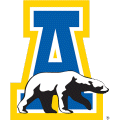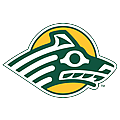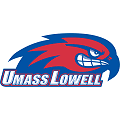These things tend to happen far more frequently with top level programs, the ones that grace the NCAA tournament more often than not. Those programs are usually more easily able to absorb the hit.
So it's an extra whammy when it happens to RPI. It's even worse when it's a goaltender.
That's what's happened to the Engineers. Alec Dillon, who's been expected on campus this coming August since back in September 2013, is off to the Edmonton Oil Kings of the WHL. RPI's plans for the most crucial single position in the game, set for nearly two full years, have just been thrown in the garbage.
We've warned that Dillon was a flight risk in the past. Edmonton specifically went out of their way to acquire his rights despite his "commitment" to RPI. But we thought his year spent in the USHL was a pretty solid sign that he was bound for Troy after all, especially since he could have been in the WHL this past season if he'd wanted to be. Oops.
What changed, and when? We may never know. Perhaps the Los Angeles Kings decided their property would develop better in major junior than in college (they of incumbent starting goaltender Jonathan Quick, a UMass alum). Perhaps Edmonton waved enough money and fed enough lines. Doesn't matter. The result from our perspective is still the same. It's another kick in the stomach for a program that has had plenty of them in the recent past.
Appert's comments to Ken Schott pretty much tell the entire story:
“I was surprised because he had given us his word for two years,” Appert said Saturday. “That’s the way we recruit. We recruit personally. We have a good relationship. My deal is that we don’t mass recruit. I’ll give you my word that we won’t recruit another goalie. If you give us your word, it’s a done deal and not continue to explore options.
“He, obviously, decided to change his mind on that.”
We mentioned when the incoming freshmen press release came out that Seth Appert believed a Kasdorf-Dillon platoon was possibly the best one-two punch in net in the entire nation. Now, we'll never know. It leaves the team in a precarious position heading into next season, as the goaltending corps now comprises a very talented but often injured starter and a senior who played club hockey for two years.
The reaction from these parts is more annoyance than disappointment. We've written at length about the CHL/NCAA divide. It's something every single NCAA program with talented players has to deal with pretty much all the time - if you think the Engineers are safe from Mike Prapavessis potentially ending up in London some day just because he's played a complete season in the Cherry and White already, think again.
So let's not waste words on what could have been. Dillon made his choice, and no matter what you think of it, moving on from it is in everyone's best interest.
Moving on means finding another goaltender for 2015-16. As you can imagine, the options aren't vast with puck drop only about four months away. #1 goaltenders these days are usually found a couple of years in advance (like with what's his name that isn't coming).
What's out there? We'll spitball for you. Here are a few potential names that could (and should) drop in the next month or so. Ages are as of August. Bear in mind that RPI's academic standards may potentially make some players ineligible, but that's nothing we'd know anything about. These names are ranked more or less in the order of preference in terms of who we'd like to see fill the void.
Adam Huska - 18 - Zvolen, Slovakia
It isn't known 100% if Huska is even looking at playing college hockey, but if you want a netminder on the NHL's current radar, Huska is really the top one available for next season that could potentially accept an NCAA scholarship. He was ranked as the 5th best North American goaltender eligible for the 2015 NHL Entry Draft in the midterm rankings (as he was on Green Bay's roster in the USHL at the time), but has since slid to 16th, still better than prospects bound for places like Boston College and Minnesota. His countryman and teammate on last year's Slovakia U-18 team, Matej Tomek, is bound for North Dakota. If he's willing to spend a full year in the USHL next season, he could find himself a similar gig with a power program. If RPI could tempt him to become the second Slovak on the roster next season, they could find themselves with a large (6'3") goalie who could make that one guy who just left easily forgotten.
Matt Jurusik - 18 - La Grange, IL
Ranked 21st among North American netminders on the CSB's midterm rankings, Jurusik was unranked in the final accounting but still had a pretty outstanding season as the top choice goaltender for the Janesville Jets of the NAHL. The Jets were the NAHL's top team during the regular season, and Jurusik's play (1.57, .939 in 40 games) was a big reason for that. He led the Jets deep into the playoffs with a further 1.89, .931 in 9 games. He earned a bronze medal with Team USA's Ivan Hlinka tournament team last summer. At 6'1", he'd be exactly the same size as the netminder he'd be replacing on the roster. Like Huska, he'd represent a potential future #1 goaltender for the team, and he would certainly benefit from a season as Kasdorf's understudy, as he may still be a little bit raw for the NCAA right out of the gate - but the talent is certainly there, as he demonstrated this season, his first since graduating from the Midwest's Tier 1 Elite League. He's going to be playing college hockey eventually, the only question is when. As with Huska, he might be a 2016 arrival for a program with more visibility, but who knows if he could be tempted into the NCAA for next season with the chance to platoon right away?
Cam Hackett - 19 - Sault Ste. Marie, ON
Formerly committed to Cornell, Hackett has been in limbo this season after he decommitted from the Big Red in February 2014, about 14 months after giving his verbal. He had originally been slated to arrive in Ithaca this past fall - supposedly, his decision to look elsewhere was driven by Cornell's request that he delay his arrival by a year. This season, with the Lincoln Stars of the USHL, he had a stat line of 3.85, .895 in 43 games as Lincoln struggled through a difficult campaign that could have been far worse without him. A fairly high (4th-round) OHL draft pick by the Owen Sound Attack, Hackett probably could have played this past season in major junior had he been so inclined to do so, but as with that guy that just departed for the WHL, that option does still remain open to him. As with Weyrick, the fact that he was previously associated with an ECAC team is a solid indicator that he'd be a fit academically, and he is similar in stature at 6'2". The Big Red beat out interest from BU, Michigan State, North Dakota, and Wisconsin to initially land Hackett. Those are the kind of teams usually on the lookout for the best of the best and little else.
Blake Weyrick - 19 - Malibu, CA
A former Brown commit, Weyrick is an alum of the US Under-17 and Under-18 teams (though he played second-string most of the time to current Michigan State goaltender Edwin Minney). He's an interesting option that would fall into the category of "high-risk, high-reward." You don't make a U-17 or U-18 roster without having a lot of great potential, but over the course of the last three seasons, he hasn't seen a great deal of playing time. His NHL stock fell precipitously last season, going from 3rd among North American goaltenders, a sure draft selection in the midterm rankings, to 15th in the final rankings, ultimately going undrafted. This year, he was beaten out by some guy who just bolted for the WHL for the starting job with Tri-City of the USHL, eventually landing in the NAHL with Janesville, but he spent much of the season as the second choice to Jurusik. There's a lot of potential here. He got into Brown but decommitted over a lack of financial aid. He's likely got the academic background that would work at RPI, he'd likely at least be able to earn an athletic scholarship, and the school could certainly represent a new beginning for him. Appert could take a flier on the 6'3" Weyrick and see if he develops into the potential that once had him as a surefire top-end NHL draft pick.
Jared Rutledge - 21 - Chicago, IL
Rutledge would be an intriguing option for the Engineers because of his eligibility situation. He played 10 games at Michigan in 2012-13, putting up a pretty rough stat line of 4.24, .854 before leaving to return to the USHL, where he's been the past two seasons. That means he's got only two seasons of NCAA eligibility remaining - potentially allowing RPI a bit of a bridge to go out and find a new top-end netminding prospect. He was the starter in the season opener for the Wolverines his freshman year despite an eye injury that required surgery during the preseason. This season in the USHL, he served as the backup in Tri-City for some guy who just went to the WHL, putting up an impressive 2.20, .920 line in 20 games. Rutledge also saw six games between the pipes for Janesville of the NAHL (there they are again!). He would be eligible to play immediately, but at 5'11" is definitely short by Seth Appert goaltender standards.
Jonah Imoo - 21 - Surrey, BC
Another interesting older possibility for RPI, Imoo has aged out of the BCHL after three full seasons as a starting netminder in the league. In 2012, he was named the top goaltender in the World Junior A Challenge while leading Canada West to the silver medal. As the Merritt Centennials' starter this year, Imoo has the top numbers from the BCHL among uncommitted goaltenders. His father, Dusty, is a goaltending development coach for the Winnipeg Jets, but some scouting reports from a few years back suggested that he needed to become a bit more consistent. If he's worked out those issues since then, his 6'1" frame is probably enough to fit into the RPI system, but bringing him in would probably require the Engineers to go out and find an even stronger goaltending recruit for 2016.
Kevin Aldridge - 21 - Beverly Hills, MI
The Engineers have been picking up players from the Fairbanks Ice Dogs of the NAHL left and right, so why not one of their goaltenders? Aldridge was the top choice netminder for Fairbanks in 2014 when they won the NAHL title (along with Viktor Liljegren and future Engineer Todd Burgess). He then headed to Lake Superior State, where he made only two starts and four total appearances (4.80, .833) before leaving school in December and returning to Fairbanks. He left in part because he had been recruited by the previous coaching staff, and the current one wasn't giving him much ice time. The first major hangup with Aldridge is that he would require a waiver from the NCAA to be able to play next season since he suited up for LSSU last year, and those waivers have gotten pretty stingy in recent years. The second is that he stands just 5'8", which is absolutely lilliputian for the way Appert wants his goalies.
Colin DeAugustine - 20 - Burgettstown, PA
The Youngstown Phantoms were the best team in the USHL during the regular season, led by its strong offense but also by its solid platoon in between the pipes. BC commit Chris Birdsall had the better numbers, but not by much over DeAugustine (31 games, 2.68, .910). An older goaltender who hasn't yet caught on with a college program, he could fit in well as an experienced guy who'll make for a more than capable backup to Kasdorf in the coming year. He made several highlight reels in March with this idiotic save that shows off his flexibility, but like Aldridge, count his size against him in RPI having a great deal of interest in his services. He's slightly taller at 5'9", but he still doesn't quite fill the goalmouth the way pretty much all Appert recruits have in the past.







